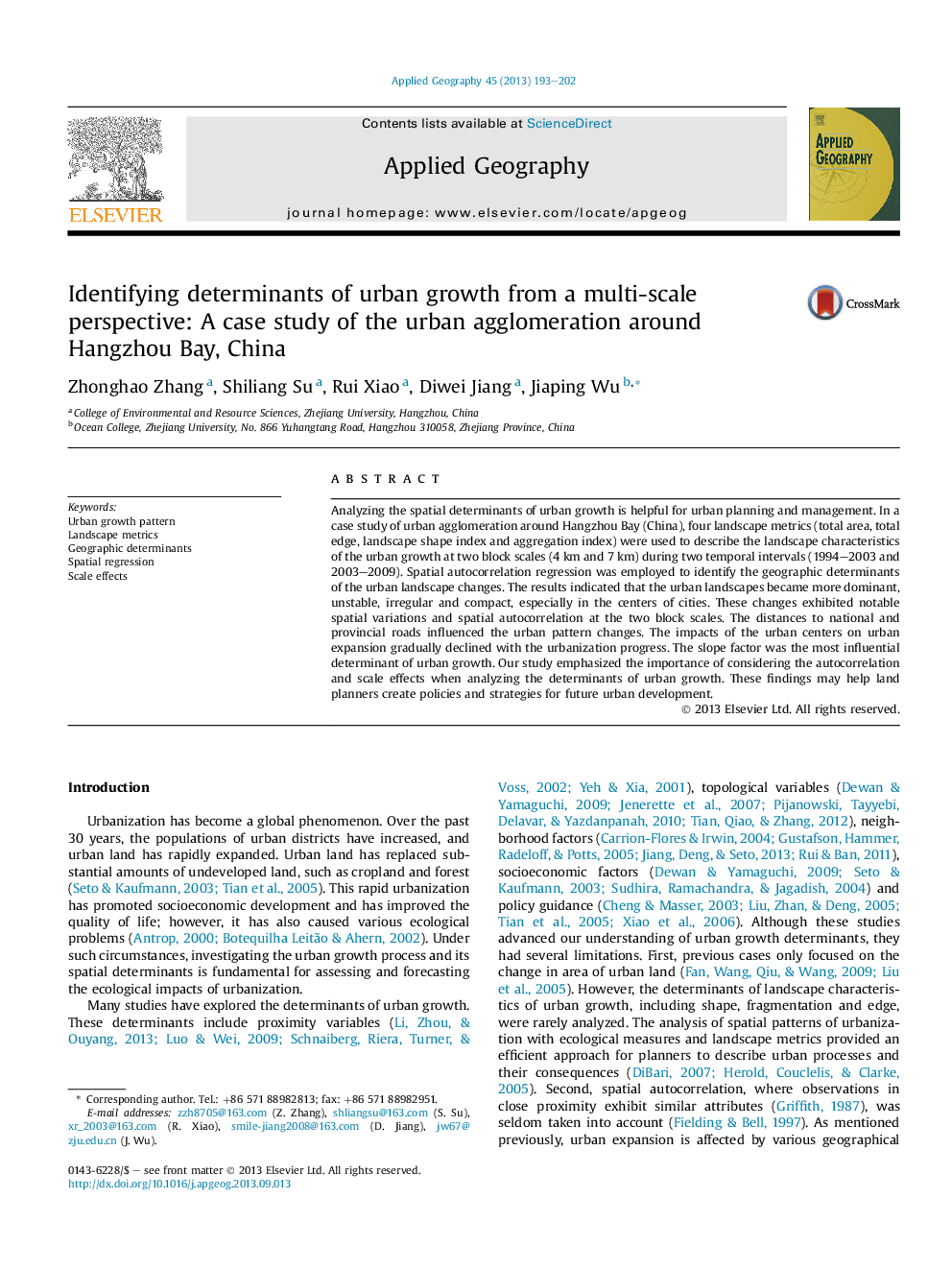| Article ID | Journal | Published Year | Pages | File Type |
|---|---|---|---|---|
| 6538798 | Applied Geography | 2013 | 10 Pages |
Abstract
Analyzing the spatial determinants of urban growth is helpful for urban planning and management. In a case study of urban agglomeration around Hangzhou Bay (China), four landscape metrics (total area, total edge, landscape shape index and aggregation index) were used to describe the landscape characteristics of the urban growth at two block scales (4Â km and 7Â km) during two temporal intervals (1994-2003 and 2003-2009). Spatial autocorrelation regression was employed to identify the geographic determinants of the urban landscape changes. The results indicated that the urban landscapes became more dominant, unstable, irregular and compact, especially in the centers of cities. These changes exhibited notable spatial variations and spatial autocorrelation at the two block scales. The distances to national and provincial roads influenced the urban pattern changes. The impacts of the urban centers on urban expansion gradually declined with the urbanization progress. The slope factor was the most influential determinant of urban growth. Our study emphasized the importance of considering the autocorrelation and scale effects when analyzing the determinants of urban growth. These findings may help land planners create policies and strategies for future urban development.
Related Topics
Life Sciences
Agricultural and Biological Sciences
Forestry
Authors
Zhonghao Zhang, Shiliang Su, Rui Xiao, Diwei Jiang, Jiaping Wu,
